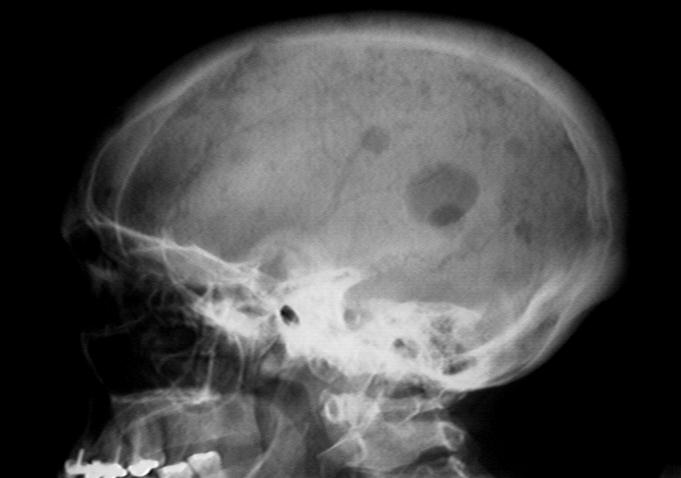Multiple Myeloma is the clonal proliferation of plasma cells in the bone marrow. The signs and symptoms of multiple myeloma are very non-specific, however, skeletal-pains is among the most common presenting features.
Multiple Myeloma Symptoms:
Multiple Myeloma is a disease of old individuals. Thus, patients are usually more than 50 years of age. Very rarely, patients are in their thirties or are less than 50 years of age.
Signs and symptoms of multiple myeloma can be remembered by the mnemonic “CRAB“.
- “C” stands for high calcium,
- “R” stands for Renal failure,
- “A” stands for Anemia, and
- “B” stands for bony involvement.
Anemia:
Because of the clonal proliferation of plasma cells, most of the marrow is infiltrated with these cancerous cells. Patients develop anemia which is usually macrocytic.
Anemia in patients with multiple myeloma can also be due to “Anemia of Chronic Disease” and Iron deficiency anemia secondary to chronic use of NSAIDS for skeletal pains.
Patients may sometimes have suppression of all cell lines and present with pancytopenia.
Bone Pains or skeletal pains:
Patients with multiple myeloma have activation of osteoclasts – the bone-eating cells. Thus patients present with severe skeletal pains which is the predominant feature in most of these patients.
Patients may develop fractures which are most common in the vertebral bones and neck of the femur. Occasionally, patients may also notice a reduction in their heights.
Bony involvement is evident on the radiographs as “Lytic lesions”. Lytic lesions are commonly seen on the lateral radiograph of the skull, clavicles, and pelvic bones.
In contrast to metastatic bone disease, Bone scan in patients with multiple myeloma is usually cold i.e. normal unless the patient develops fractures which will be shown as a hot area on the bone scan.
Renal Failure:
Renal failure is another dominant clinical feature of multiple myeloma. Renal failure can be caused by the deposition of excessive light chain immunoglobulins, high uric acid levels, chronic use of Non-steroidal anti-inflammatory drugs, infections, hypercalcemia, and infections.
Deposition of light chains in the kidneys is also called as “Myeloma Kidneys”, high uric acid levels can cause urate nephropathy, NSAIDs use can cause analgesic nephropathy, infections can result in acute tubular necrosis, and hypercalcemia can cause dehydration leading to pre-renal AKI, as well as nephrolithiasis causing obstructive uropathy.
Hypercalcemia:
Patients with multiple myeloma have activation of osteoclasts, also called as the bone-eating cells. Activation of osteoclasts causes bony lytic lesions resulting in the release of calcium into the plasma.
Advanced cases may present with fractures and occasionally, features of spinal cord compression.
Hypercalcemic crisis is the extreme elevation of calcium in the blood usually above 14 mg/dl, resulting in dehydration, altered mental status, and multiple organs failure.
Infections:
Although patients have elevated immunoglobulin levels secondary to the proliferation of the plasma cells, these immunoglobulins are defective and are not targeted against any bacterial organisms.
Furthermore, the normal bone marrow is infiltrated and replaced with plasma cells, patients develop neutropenia and become prone to infections and sepsis.
Thrombosis:
Patients with multiple myeloma have a tendency to develop thrombosis. Patients may present with a stroke, myocardial infarction, deep vein thrombosis, and pulmonary embolism.
Neurological features:
Patients may develop neuropathy which is manifested by numbness, tingling, and paraesthesias.
Occasionally, patients may develop features of cord compression as a result of vertebral fractures or plasmacytomas. These patients present with paraplegia and lower limbs weakness.

